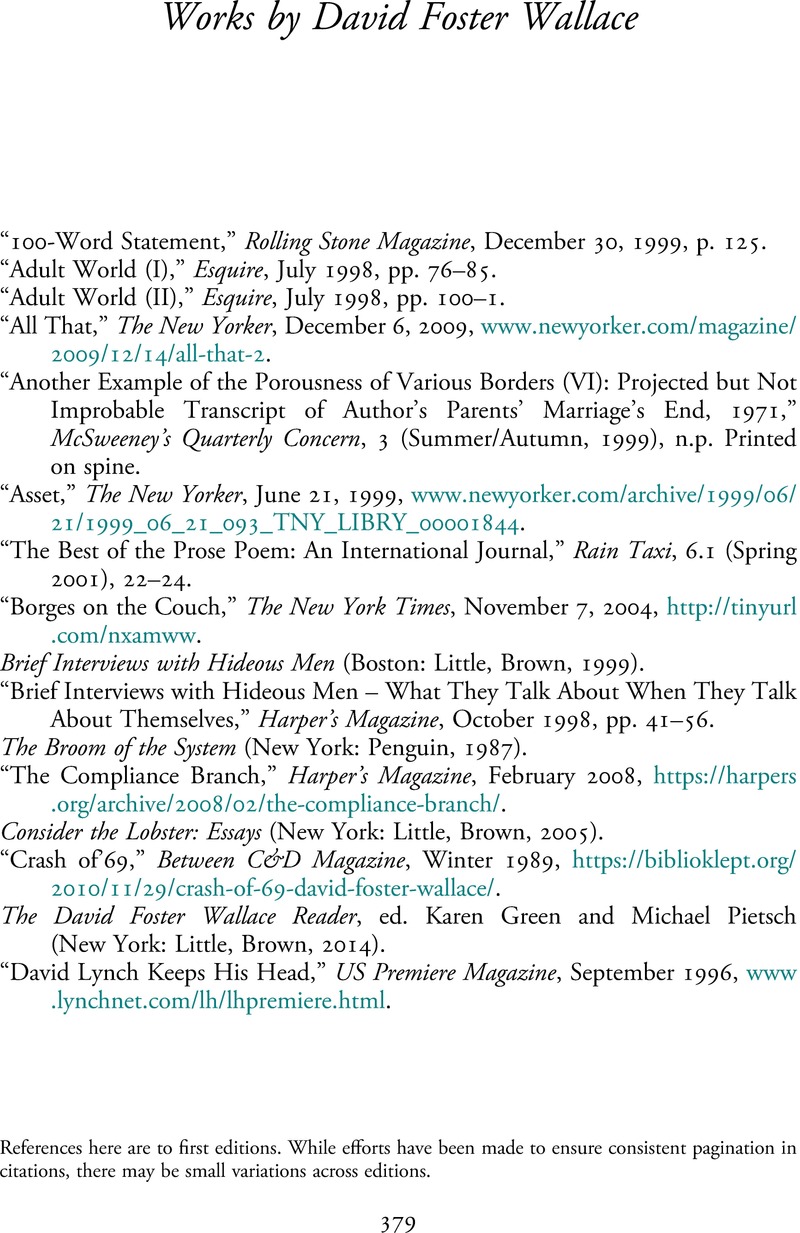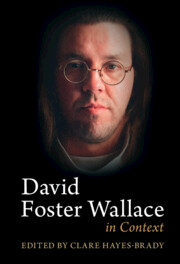Book contents
Works by David Foster Wallace
Published online by Cambridge University Press: 18 November 2022
Summary

- Type
- Chapter
- Information
- David Foster Wallace in Context , pp. 379 - 383Publisher: Cambridge University PressPrint publication year: 2022



